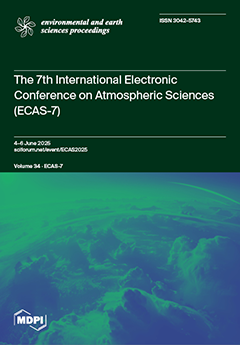The petrochemical industry emits large amounts of nitrogen oxides (NOx). It is the second source of volatile organic compounds (VOCs), which, through photochemical reactions, can form tropospheric ozone (O
3) and, together with geographic and meteorological conditions, influence the spatial and temporal
[...] Read more.
The petrochemical industry emits large amounts of nitrogen oxides (NOx). It is the second source of volatile organic compounds (VOCs), which, through photochemical reactions, can form tropospheric ozone (O
3) and, together with geographic and meteorological conditions, influence the spatial and temporal behavior of pollution. The objective of this study is to assess the influence of air pollutants NOx, NO
2, and NO, as well as meteorological factors on O
3 concentration levels in the city of Cadereyta, Nuevo Leon, which is characterized by its petrochemical industry as part of the metropolitan area of Monterrey, Mexico. The data were analyzed using the Spearman’s correlation coefficient, identifying a weak-to-moderate negative association between NOx and NO
2 with O
3 in the spring season and a null relationship in the summer. However, the autumn and winter seasons observed a moderate to strong negative relationship. Subsequently, a multiple linear regression analysis determined the influence of air pollutants NOx, NO
2, and NO, as well as meteorological factors on O
3 concentration levels. In this sense, when the concentration levels of NOx and NO
2 decrease, the concentration of O
3 will increase proportionally according to the season of the year. The prediction model obtains a coefficient of determination (R
2) of 0.60 and a root-mean-square error (RMSE) value of 0.0096 ppm. In the prediction model, all variables presented a significant effect on the interpretation of the dependent variable. The independent variables that provided the most significant variation in the concentration levels of O
3 were NOx and NO
2.
Full article



